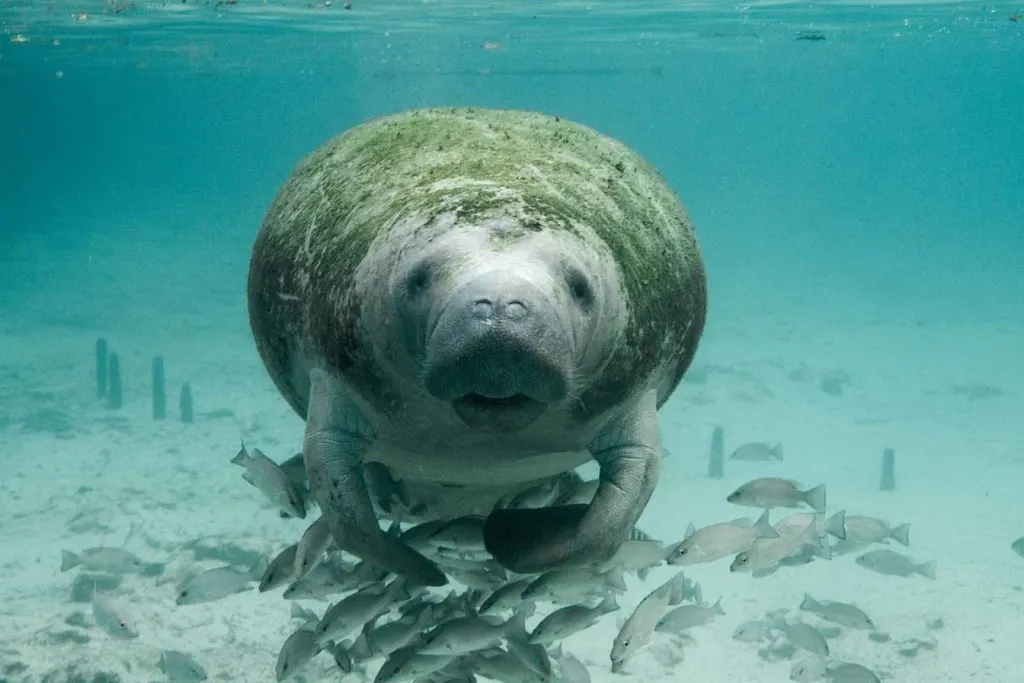Looking for the Best Places to See Manatees? Have you ever wanted to experience a Manatee or a Dugong while diving, snorkeling, or on a boat close up in their natural habitat?
We have researched and shall show you the best places to meet Dugongs and Manatees and even where to swim with them.
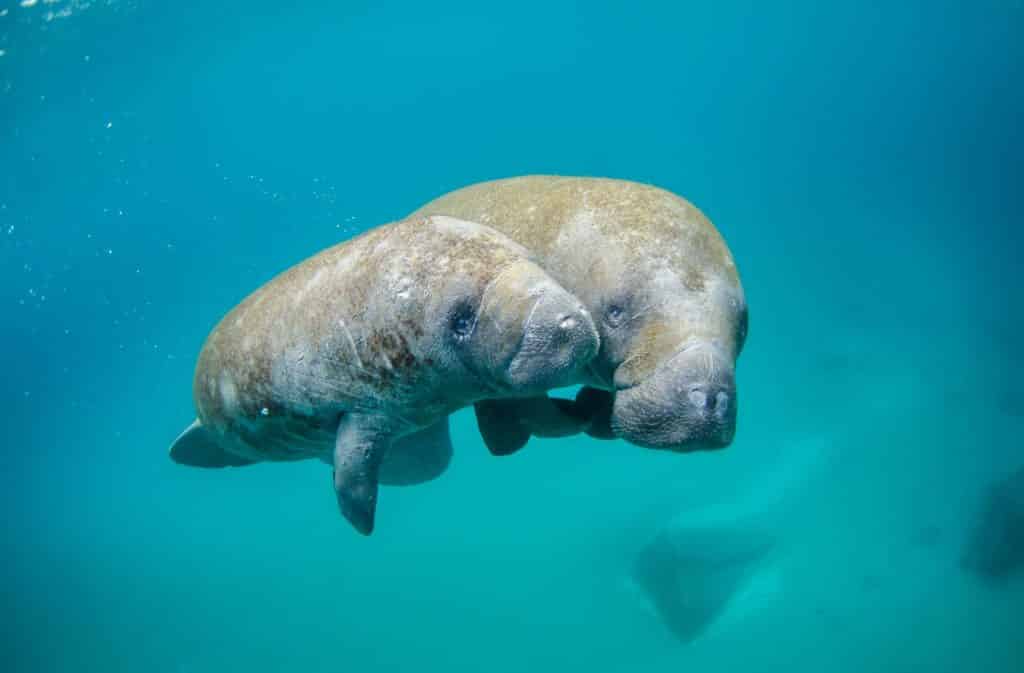
Sea cows are considered vulnerable to extinction. Several international laws are in place to protect these animals, such as the Marine Mammal Protection Act. Still, they are severely threatened by men-induced dangers like habitat loss due to coastal development, watercraft collisions, and poaching.
Key Points:
- Manatees and dugongs are vulnerable to extinction and face threats from habitat loss, watercraft collisions, and poaching.
- Manatees live in shallow waters of marine coastal areas and freshwater habitats, while dugongs are found only in saltwater.
- Both manatees and dugongs primarily feed on seagrass.
- Manatees and dugongs are similar in appearance, but the most significant difference is their tails: manatees have paddle-like tails, while dugongs have fluke-like tails.
- Manatees can be found in the Gulf of Mexico, Central America, Caribbean Islands, South America, and West Africa, while dugongs are found in the Indian Ocean and the southwest Pacific Ocean.
Check out our blog about the Best Places to dive and Swim with Dolphins.
Check out our page about which animals to find in Mexico!
You can either read the full article or jump ahead to your favorite part of Where to see Manatees!
Get to know Manatees
Manatees live in the shallow waters of marine coastal areas as well as freshwater habitats. They can be found in the warm water of tropical regions only. Unlike seals, they do not have suitable limbs for moving around on land, they never leave the water. They spend their days drifting slowly around while grazing or sleeping. Manatees have to surface in intervals for breathing.
Dugong diet
Dugongs need to eat large amounts of seagrass.
Differences Between Dugong and Manatee/ Dugong vs Manatee
For non-experts, it’s easy to be confused about the differences between Manatees and Dugongs. You might know the names Dugong or sea-cow or even Sirenia. So let’s start with a bit of clarification. In the taxonomy of animals, we speak about the order of the Sirenias or, using a much more prevalent expression, sea cows. The name sea cow comes from their preferred diet, which is sea grass.
Their closest relatives in the animal kingdom are the elephants. Under the order of sea cows we have two families. One comprises three different species of Manatees. The other family consists of only one remaining species which is called Dugong. Since all these sea cows are cousins, they look very similar, with the most significant difference being their tails. Manatees have paddle-like tails and dugongs have fluke-like tails. To make things easy, we call them here simply sea-cow or Manatee alike. Learn more about Where to see Manatees.
Key Facts of Manatees and Dugongs
Here are some critical facts about Dugongs and Manatees. The following table is good for gaining an overview of them.
| Body length | 2.5 to 4 m (8 to 13 ft) |
| Habitat | Manatee: salt and freshwaterDugong: only saltwater |
| Typical weight | up to 1,500 kg (3,300 lb) |
| Diet | mostly seagrass and other water plants, occasionally invertebrates. they eat 10 – 15% of their body weight per day (appr. 50 kg / 110 lb) |
| Duration of dives | 5 to 20 minutes |
| Maximum age | Manatee: 40 years; Dugong: 60 years |
Where do Manatees and Dugongs live?
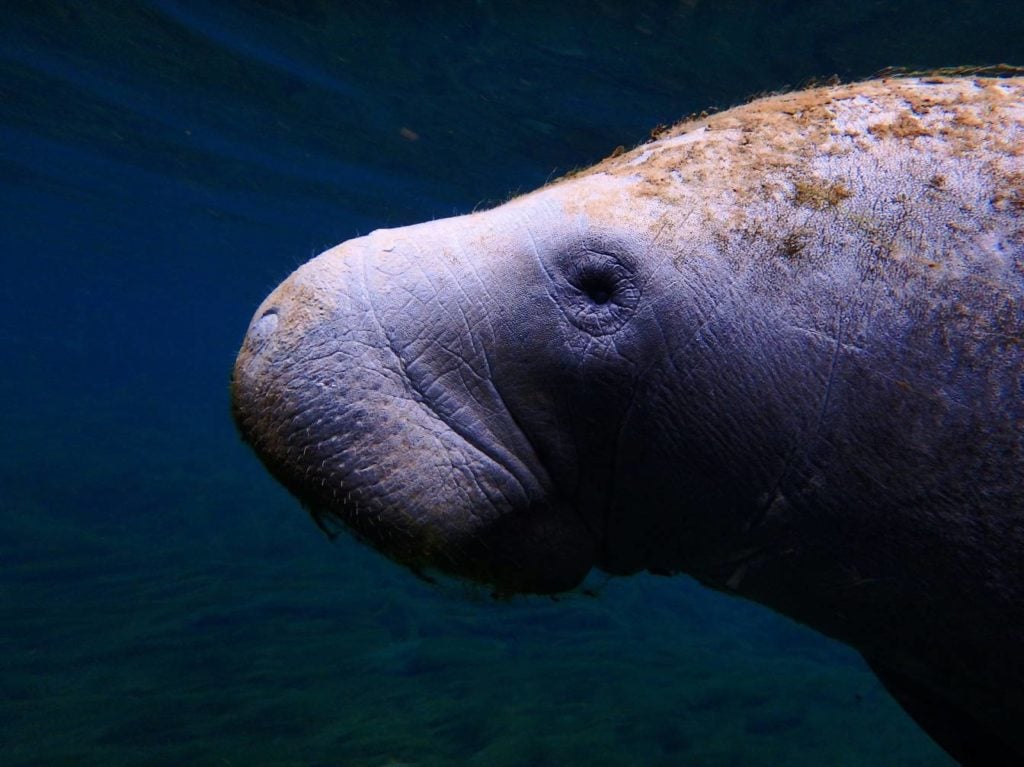
The distribution areas of the four families of sea cows do not overlap and are sometimes very far apart (see map below). The so-called West Indian manatee lives in the Gulf of Mexico off the coasts of Florida and the south-eastern USA, the coasts of Central America, the Caribbean Islands, and the northern coasts of South America (green area).
Next to it, in the Amazon region in South America, lives the Amazonian manatee (red area), and finally, on the coasts of West Africa between Senegal and northern Angola and in the river systems, there lives the African manatee (orange area). All about Where to see Manatees.
The only living species of Dugong is found exclusively on the coasts of the Indian Ocean, including the Red Sea and the southwest Pacific Ocean (blue area).
West Indian in green, Amazonian in red, African in orange, dugong in blue
source:
Endangerment of Manatees and Dugongs
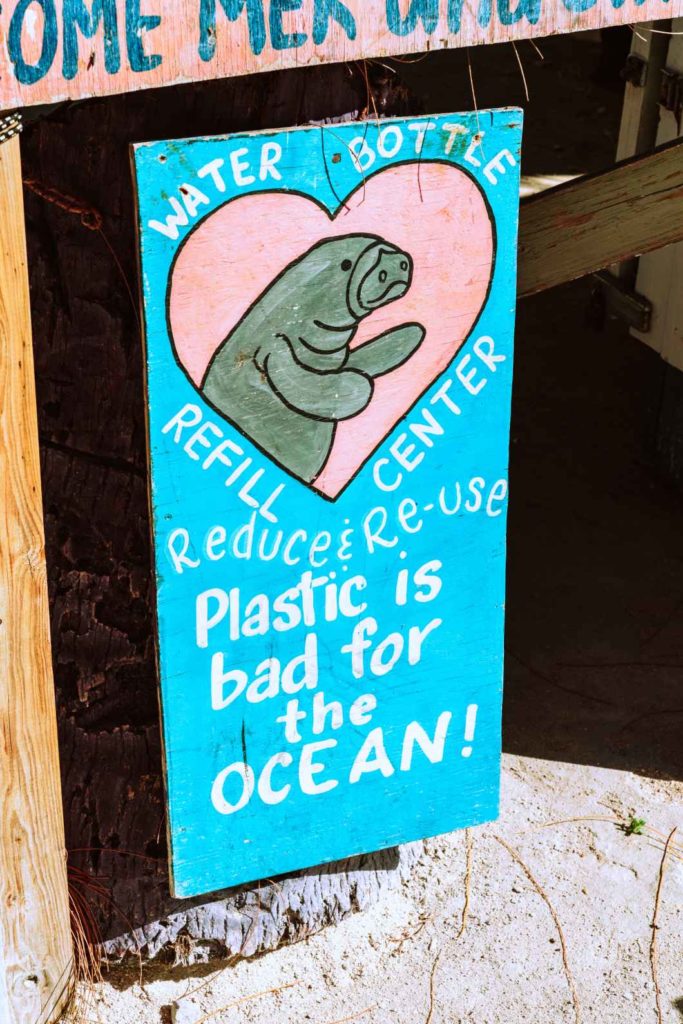
Both Manatees and Dugongs are pretty vulnerable to environmental changes led by humans as they are not fast and very peaceful. The occupation by land and our fishing habits and boat engines pose a massive threat to Manatees and Dugongs.
Most species are now seen as vulnerable by the IUCN Red List of Threatened Species. If you want to contribute to the rescue of manatees and dugongs, we recommend visiting the Dugong and Seagrass Conservation Project or Save the Manatee Club
How endangered are Manatees
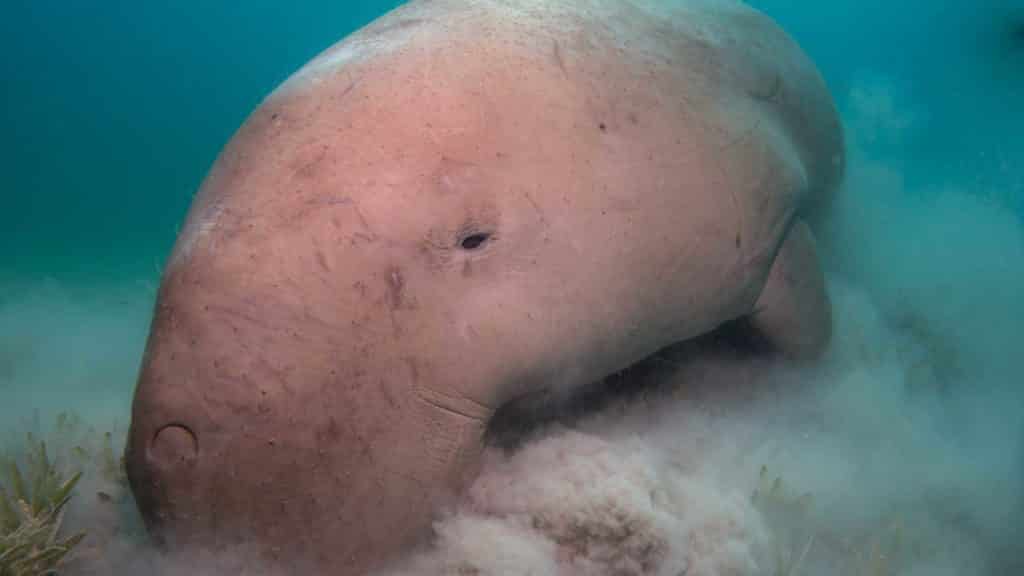
All species of manatees were hunted for meat by the inhabitants of the coasts of their distribution areas. This is documented especially for the Indians of the North and Central American coasts. The meat was used as food, skin, and other body parts for other purposes.
William Dampier, who became known as a British buccaneer and traveler, described in his travelogues of 1681 the Caribbean manatee from the Gulf of Mexico as well as from the rivers of Panama. There he also described the hunting of the animals by the Miskito and the subsequent use of the meat as food and the rough skin as oars and horse whips.
However, no excessive hunting is known to have taken place, the hunt was usually for current needs. In contrast, Steller’s manatees were pursued by seal hunters from the time of their discovery and killed in large numbers. The last animals disappeared in 1768, only 27 years after their discovery by Georg Wilhelm Steller. All about Where to see Manatees.
Continue reading below on the Best Places to See Manatees.
How endangered are Dugongs
Today, all four living species are listed as endangered by the IUCN [2]. The greatest threat today, however, is no longer from hunting but, especially for the Caribbean manatee, from pleasure craft that can inflict severe injuries on the animals with their propellers when they are run over.
For this reason, protected areas have been created, especially off the US coasts in the Gulf of Mexico, and clearly visible signs have been put up to indicate this; motorboat traffic is not permitted in these areas.
A further threat is the penetration of humans into their habitat; due to their metabolism, manatees need an immense amount of water plants to cover their energy requirements and thus a corresponding water quality, which is decreasing more and more due to the development of their retreat areas.
Especially the rivers in South America and Africa are becoming increasingly cloudy and contaminated with environmental toxins, and retreat areas rich in plants are becoming rare.
Manatees in the Amazon Rainforest
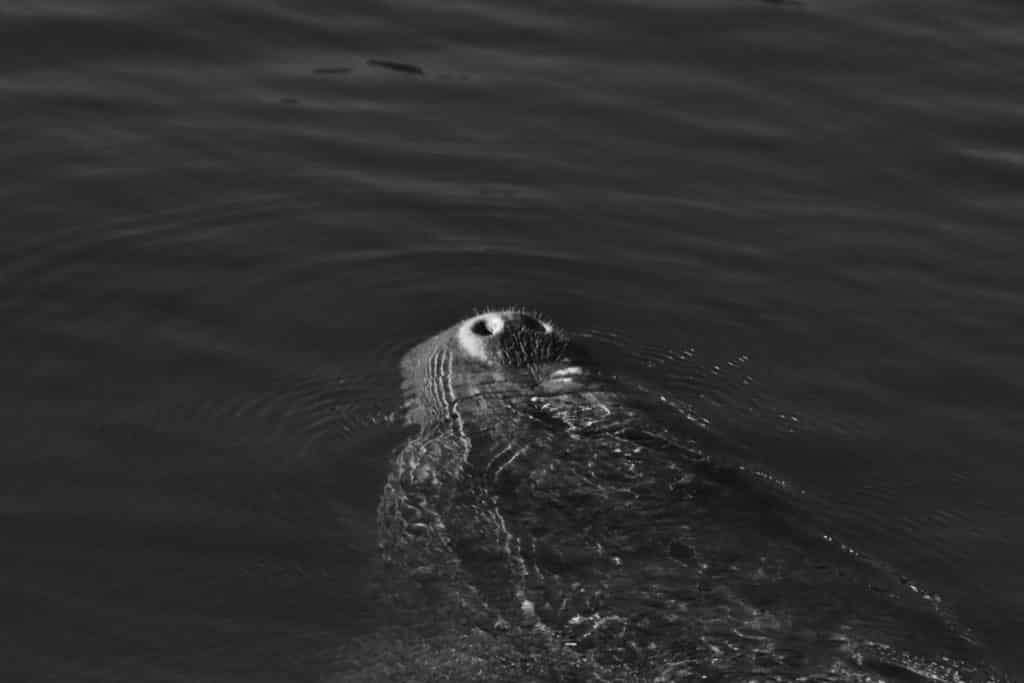
Like all manatees, Amazon manatees spend their entire lives in the water. However, as air-breathers, they emerge several times per minute to breathe but can also stay underwater for up to 15 minutes. They prefer waters with temperatures between 22 and 30 degrees Celsius. Amazon manatees are pure herbivores and feed on water plants.
However, since their herbivorous diet is not energy-rich, they must consume about 8 to 15 percent of their weight daily to survive. Manatees can store large amounts of fat as bubbles and thus bridge long hunger periods. When no water plants are available in dry periods, they can survive up to six months without food.
Although the Amazon Manatee is spread over a large area and has hardly any natural enemies, it has become very rare and is considered endangered in its survival. Its peaceableness, slowness, and its coveted fat and meat have made it an easy and popular prey for humans.
Further, serious dangers threaten the Amazon Manatee today due to the rapidly progressing clearing of the Amazon rainforests for timber production, soya, palm oil and other plantations, or for mining and cattle grazing. That is why the WWF has been working for a long time on various levels to save the Amazon rainforest. The “Amazon Region Protected Areas Programme” (ARPA), whose implementation the WWF is playing a significant role in, aims to put 50 million hectares, an area the size of Spain, in the Amazon rainforest under permanent protection within ten years.
To read more about the top 10 endangered animals in the Amazon, please see this article.
The Story of Phu Quoc, Vietnam, is an example of the Threat to Manatees
They look like they’ve fallen out of time: Massive, misshapen, gray giants: Carefully, the shy forked-tailed manatees, weighing up to 1,000 kilograms, roam the tropically warm water around the most prominent Vietnamese island Phu Quoc.
Fork-tailed manatees – also known as dugongs – can grow to over three meters in length. They are vegetarians. They graze calmly for hours in the seagrass fields on the seabed in shallow water near the coast.
They have no natural enemies. Except for humans. The gigantic flood of rubbish that millions of tourists have been leaving on the island for several years is polluting the South China Sea’s extremely sensitive, species-rich ecosystem.
The already endangered manatees are in danger, as are sea turtles, octopuses, seahorses, and numerous tropical fish species.
Without manatees, the sensitive ecosystem will be thrown off course
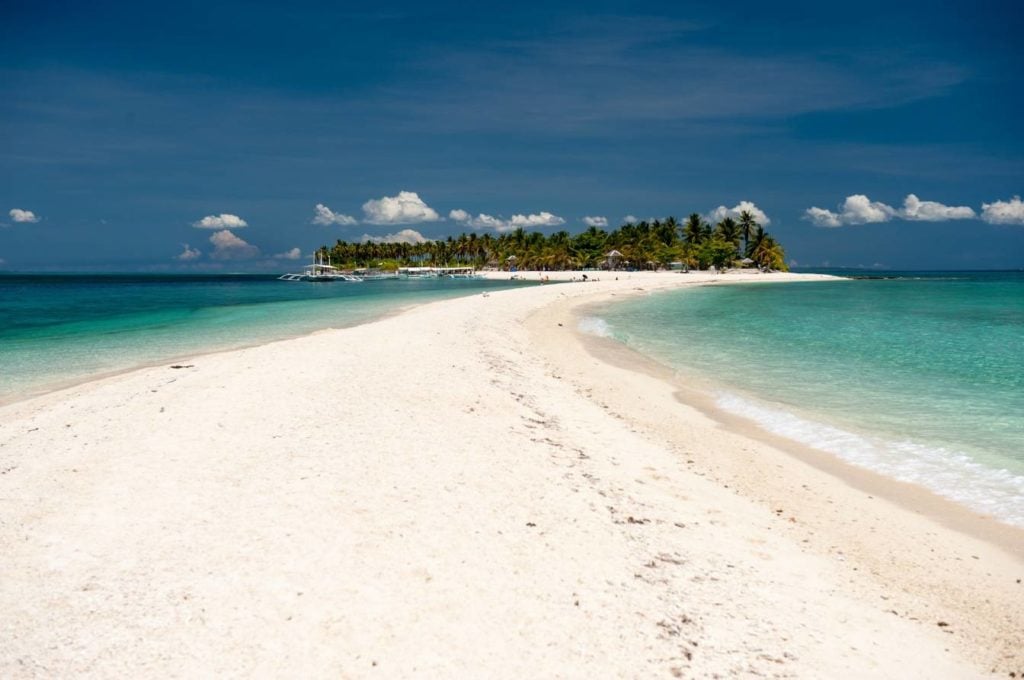
In front of Phu Quoc plastic garbage is visibly floating on the waves. “Fishermen and tourist boats throw their waste overboard,” says Stefan Ziegler of WWF Germany. Every day, tons of garbage is discharged into the sea via rivers because there is no functioning waste disposal system on the island, which is overrun by tourists.
This massively threatens the protected areas on the coral reefs and seagrass meadows off Phu Quoc.
Sea turtles confuse plastic bags floating in the water with jellyfish and die in agony. “Manatees get entangled in ghost nets and drown,” says Stefan Ziegler. And they lose their most important source of food due to increasing marine pollution – the seagrass meadows, which are shrinking worldwide anyway.
Filled with plastic, they are lost as grazing ground for manatees and nursery grounds for numerous fish species and an essential oxygen supplier in the sea. All about Where to see Manatees.
The Best Places to see and swim with Manatees or Dugongs
| Species | Body Length | Habitat | Typical Weight | Diet | Duration of Dives | Maximum Age |
|---|---|---|---|---|---|---|
| Manatee | 2.5 to 4 m | Salt and freshwater | Up to 1,500 kg | Mostly seagrass and water plants | 5 to 20 minutes | 40 years |
| Dugong | 2.5 to 4 m | Only saltwater | Up to 1,500 kg | Mostly seagrass and water plants, occasionally invertebrates | 5 to 20 minutes | 60 years |
We have researched comprehensively to find you the best spots to swim, dive or observe Manatees and Dugongs.
1. Manatees at Citrus County, Florida, US
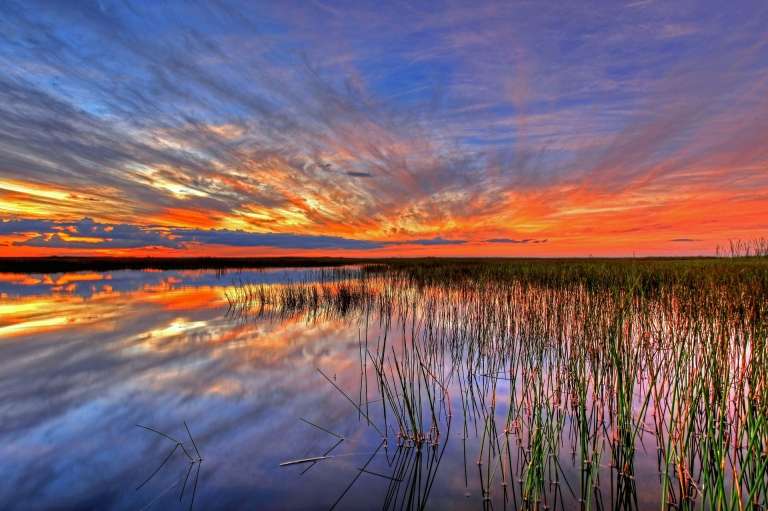
Citrus County calls itself the Manatee capital in the world. You find many tour operators who bring you close to the Manatees who enjoy the crystal clear warm spring waters all year round.
As to your liking, you can experience these animals by approaching them safely in a tour boat, during an adventurous kayak or canoe tour or by swimming or diving with them. A great spot from Best Places to See Manatees.
- Explorida
- Manatee Adventures
- Family Adventure Charters
- Crystal River National Wildlife Refuge
- Manatee paddle
- Pontoon Tours – kayaking and diving
- Captain Mike’s swimming with the Manatees
Here is also a video on what swimming with Manatees in Florida looks like!
2. Meet Dugongs in Palawan, Philippines
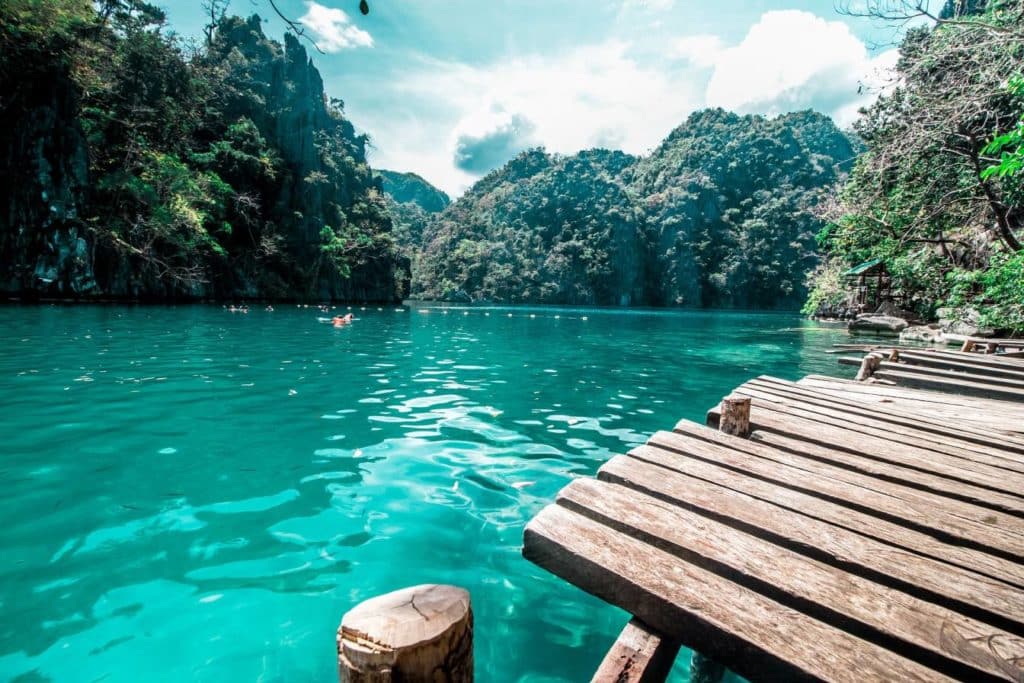
Palawan is the most western island of the Philippines. What makes the island an exotic paradise are its bizarre rock formations like from another world, crystal clear turquoise waters, hidden lagoons and countless fine sandy dream beaches, and its unique flora and fauna – above and below the water.
Dugongs can be found in the coral sea around the island. You can go on excursions to meet these gentle mammals by spotting them on a boat tour or go on snorkeling or diving trips.
- Dugong Dive Center, Busuanga Island, Palawan
- Busuanga Bay Divers, Busuanga Island, Palawan
3. Dugongs, Coral Coast and Ningaloo Reef, Australia
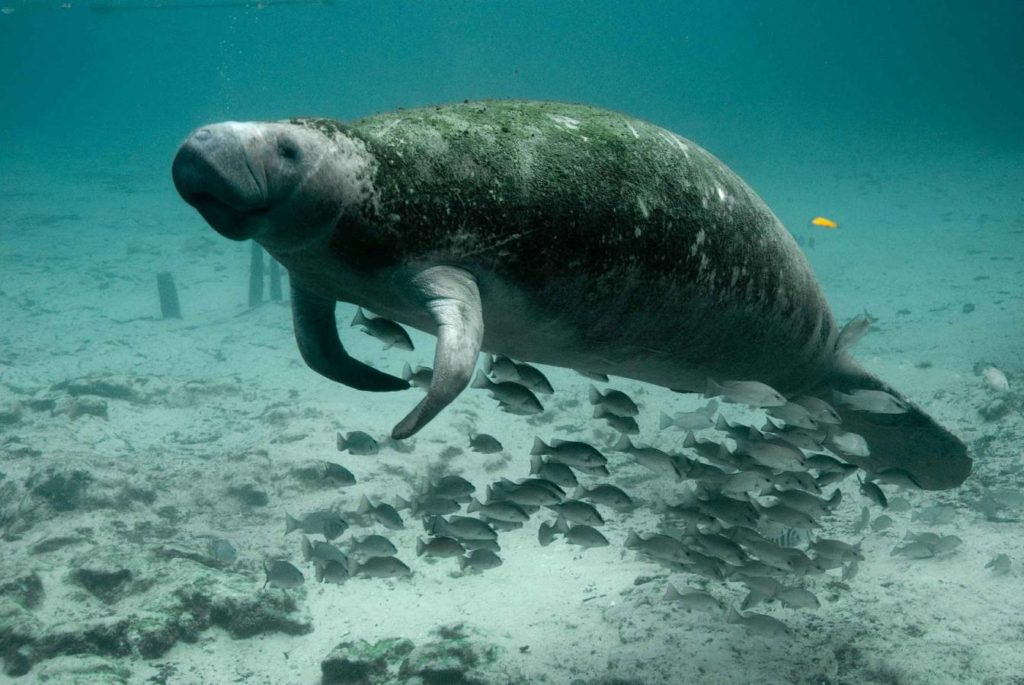
Shark Bay and, to a lesser extent, Ningaloo marine park are the two places on Australia’s west coast you have the best chances to see Dugongs out in the wild.
Shark Bay is one of the world’s largest populations of this endangered mammal species. It is estimated that 10,000 dugongs live in the waters of Shark Bay, representing 10% of the world’s remaining population.
Shark Bay is a World Heritage Site located 800 km (500 mi) north of Perth on the westernmost point of the Australian continent. Shark Bay’s waters have a number of exceptional natural features, including one of the world’s largest and most diverse seagrass beds. No wonder it hosts such a considerable number of dugongs.
The Ningaloo Reef is located approximately 400 km (250 mi) north of Shark Bay. It is the world’s largest fringing reef which comes in some places as close as 100 meters (328 ft) to the coast.
Aside from a population of Dugongs, which can be seen during boat cruises, the reef is primarily known for whale sharks gathering there yearly from March until August. All about Where to see Manatees.
More information on diving with Dugongs can be found here.
- Shark Bay Dive and Marine Safaris offer marine safaris, snorkeling, and scuba diving trips.
- Exmouth Dive and Whalesharks, Ningaloo Reef
4. Dugongs in Moreton Bay, Australia (east coast)
The Dugong habitat extends from Moreton Bay to north Queensland. It is believed that there are 14,000 Dugongs off the coast of Queensland.
- Go Dive Brisbane
- Dolphin White Island Cruises offer day trips to see Dugongs and plenty of other marine life in Moreton Bay.
- Tangalooma Island Resort, spot Dugongs during a marine discovery cruise.
5. Dugongs in Abu Dabbab, Red Sea, Egypt
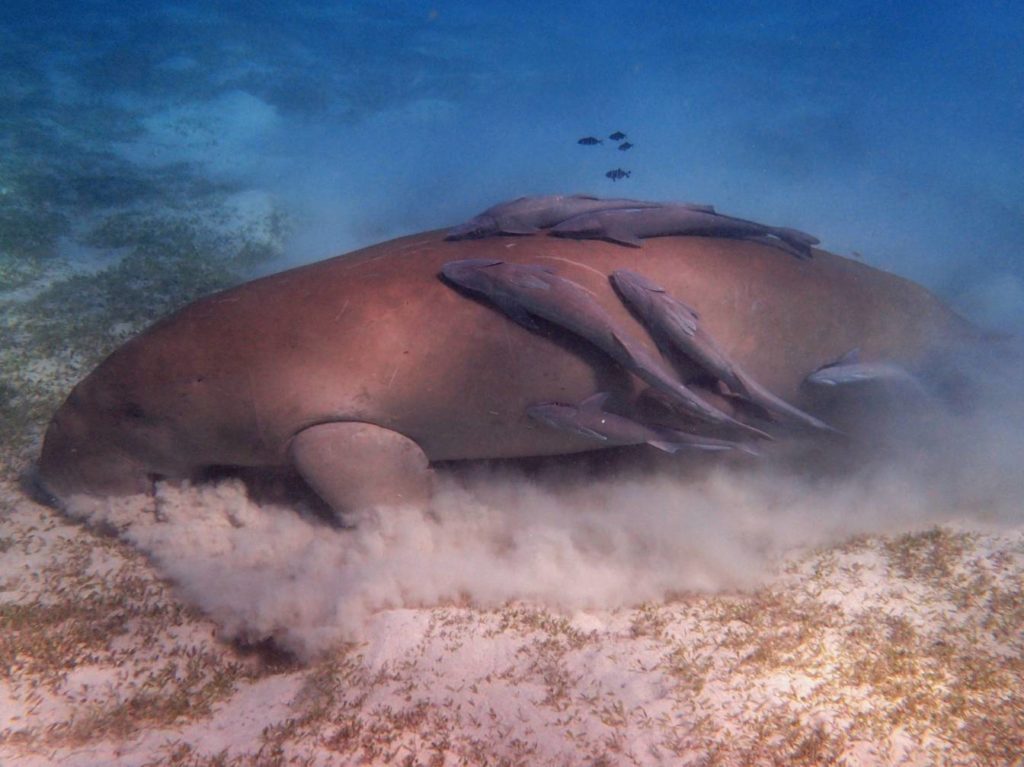
Abu Dabbab is a beautiful bay with white beaches located 30 km (19 mi) north of Marsa Alam on the Egyptian red sea coast. It is home to wide seagrass beds, which attract Dugongs and giant Green Sea Turtles.
You can encounter these animals and many other marine species during swimming and snorkeling from the beach. Many dive centers of the hotels in the area offer a day trip to Abu Dabbab.
A tour operator who organizes snorkeling trips and hotel pick-up is Abu Dabbab Dugong Bay Marsa Alam Tours.
Summary of Best Places to See Manatees
Manatees and Dugongs are incredibly gentle creatures and old relatives of our beloved elephant.
Of course, many people would like to see them in the wild, and we encourage that as long as everyone gives them the respect they deserve. Thank you for reading Best Places to See Manatees. I personally like Manatees because of their calm and friendly nature. What an animal to meet underwater.
Also, have a look at our other Mammals.
- Top 5 Rarest Animals in the World - April 15, 2024
- Mongoose Meets One Of The Deadliest Snakes Alive - April 8, 2024
- Watch: Komodo Dragon Swallows Baby Goat In Seconds - March 28, 2024

